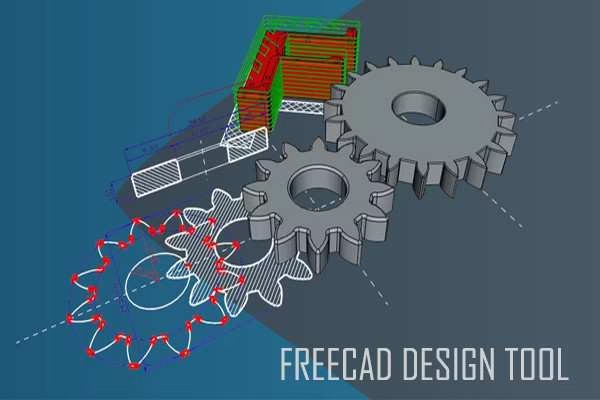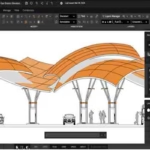Computer-Aided Design (CAD) software has become a vital tool for architects, engineers, designers, and enthusiasts alike in the current digital era. Whether you’re creating a basic 3D model, a mechanical component, or a skyscraper, CAD software may help you work more accurately and efficiently. However, what if you have a limited budget? This is where the Free CAD 1.0 software download is useful. Everything you need to know about downloading, setting up, and utilizing freeCAD 1.0 software download will be covered in this tutorial, which will also highlight the top choices. To assist you in making an informed choice, we will go over technical details, support systems, system requirements, and more.
Why Download FreeCAD 1.0 Software?
The question that needs to be answered before we get into the details is: why should you get free CAD software? First of all, expert CAD software can be costly, frequently costing hundreds or even thousands of dollars. On the other hand, free CAD software offers an affordable option without sacrificing necessary functionality. Students, novices, and everyone else looking to learn CAD without going over budget will find it ideal.
System space is another important consideration. Since free CAD software is frequently lightweight, it won’t use up a lot of computer power. This is particularly crucial if you have little storage or are working on an older computer. Furthermore, free CAD tools are made to be easy to use, which makes them perfect for people who are new to the design industry.
System Requirements and Technical Specifications
Before downloading any software, it’s crucial to ensure your system meets the necessary requirements. Here’s a quick overview of what you’ll need for most freeCAD 1.0 software download :
• Operating System: Windows 7/8/10/11, macOS, or Linux
• Processor: Intel or AMD dual-core processor (quad-core recommended)
• RAM: 4GB minimum (8GB recommended for smoother performance)
• Storage: At least 2GB of free disk space
• Graphics Card: OpenGL 2.0 compatible (dedicated GPU recommended for 3D modeling)
These requirements are relatively modest, making free CAD software accessible to a wide range of users. However, if you’re planning to work on complex projects, consider upgrading your hardware for optimal performance.
Top 2 FreeCAD 1.0 Software download Options
Now that you understand the importance of free CAD software and the technical requirements, let’s dive into the two best free CAD 1.0 software options available for download. We’ll review their features, pros, and cons to help you decide which one suits your needs.
- FreeCAD
Overview:
FreeCAD is an open-source parametric 3D CAD modeler designed for product design, mechanical engineering, and architecture. It’s highly versatile and supports a wide range of file formats, making it a favorite among professionals and hobbyists alike.
Key Features:
- Parametric modeling for easy modifications
- Modular architecture for customizable workflows
- Supports 2D and 3D modeling
- Cross-platform compatibility (Windows, macOS, Linux)
- Active community and regular updates
Pros:
- Completely free and open-source
- Extensive documentation and tutorials
- Highly customizable with add-ons and plugins
- Ideal for both beginners and advanced users
Cons:
- Steeper learning curve for beginners
- Limited rendering capabilities compared to premium software
- Occasional bugs and stability issues
Review:
FreeCAD is a powerhouse in the world of free CAD software. Its parametric modeling feature allows users to make changes to their designs effortlessly, while its modular architecture ensures flexibility. The active community is a huge plus, as it provides ample resources for troubleshooting and learning. However, beginners might find the interface a bit intimidating at first. Overall, FreeCAD is an excellent choice for anyone looking for a robust and free CAD solution.
- Tinkercad
Overview:
Tinkercad, developed by Autodesk, is a browser-based CAD tool that’s perfect for beginners and educators. It’s incredibly user-friendly and offers a simple yet powerful platform for creating 3D models.
Key Features:
- Intuitive drag-and-drop interface
- Cloud-based, so no downloads required
- Ideal for 3D printing projects
- Extensive library of pre-designed shapes
- Real-time collaboration features
Pros:
- Extremely easy to use, even for complete beginners
- No system requirements (runs in your browser)
- Great for educational purposes and 3D printing
- Free to use with an Autodesk account
Cons:
- Limited advanced features compared to desktop software
- Requires an internet connection
- Not suitable for complex or large-scale projects
Review:
Tinkercad is the perfect entry point for anyone new to CAD. Its simplicity and ease of use make it a favorite among educators and students. The cloud-based nature of the software means you can access your projects from anywhere, and the real-time collaboration feature is a bonus for team projects. However, if you’re looking for advanced tools or offline capabilities, Tinkercad might not be the best fit. For beginners and hobbyists, though, it’s hard to beat.
Support Systems and Community
One of the biggest advantages of free CAD software is the strong support system and community behind it. Whether you’re using FreeCAD or Tinkercad, you’ll find forums, user groups, and online communities where you can ask questions, share projects, and get feedback. These resources are invaluable, especially for beginners who may need guidance.
Price Comparison: Free vs. Premium CAD Software
Even if free CAD software is really affordable, it’s still worthwhile to contrast it with more expensive solutions in order to see how they differ. Better customer service, frequent upgrades, and sophisticated features are all included in premium CAD programs like AutoCAD and SolidWorks. However, many users cannot afford them because they can cost anywhere from $1,000 to $5,000 annually. On the other hand, free CAD software offers an affordable substitute without sacrificing necessary features.
Conclusion
Free CAD For anyone who wants to learn more about design without breaking the bank, 1.0 software is revolutionary. You’re sure to discover a tool that suits your needs, whether you go with Tinkercad for its ease of use or FreeCAD for its sophisticated capabilities. Both solutions have special benefits, such as cloud-based collaboration and parametric modeling, which make them perfect for a variety of users.
Make sure your machine satisfies the prerequisites before downloading, and make use of the wealth of tutorials and community help that are offered. You can realize your imaginative ideas without going over budget if you have the appropriate free CAD software.
Frequently Asked Questions (FAQs)
1. Is Free CAD 1.0 software really free?
Yes, the software listed in this guide is completely free to download and use. However, some may offer premium features or upgrades for a fee.
2. Can I use free CAD software for professional projects?
Absolutely! While free CAD software may lack some advanced features found in premium tools, they are more than capable of handling professional-grade projects.
3. What file formats do free CAD tools support?
Most free CAD software supports popular formats like STL, OBJ, STEP, and DXF. Always check the software’s documentation for a full list of supported formats.
4. Do I need a powerful computer to run free CAD software?
Not necessarily. Free CAD software is designed to be lightweight and accessible, making it suitable for most modern computers. However, complex projects may require more robust hardware.
5. Where can I find tutorials for free CAD software?
Most free CAD tools have extensive documentation and tutorials available on their official websites. Additionally, platforms like YouTube and Udemy offer a wealth of learning resources.



